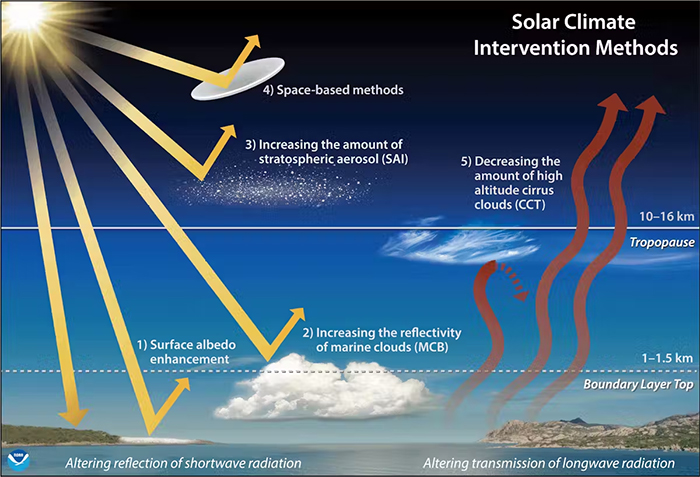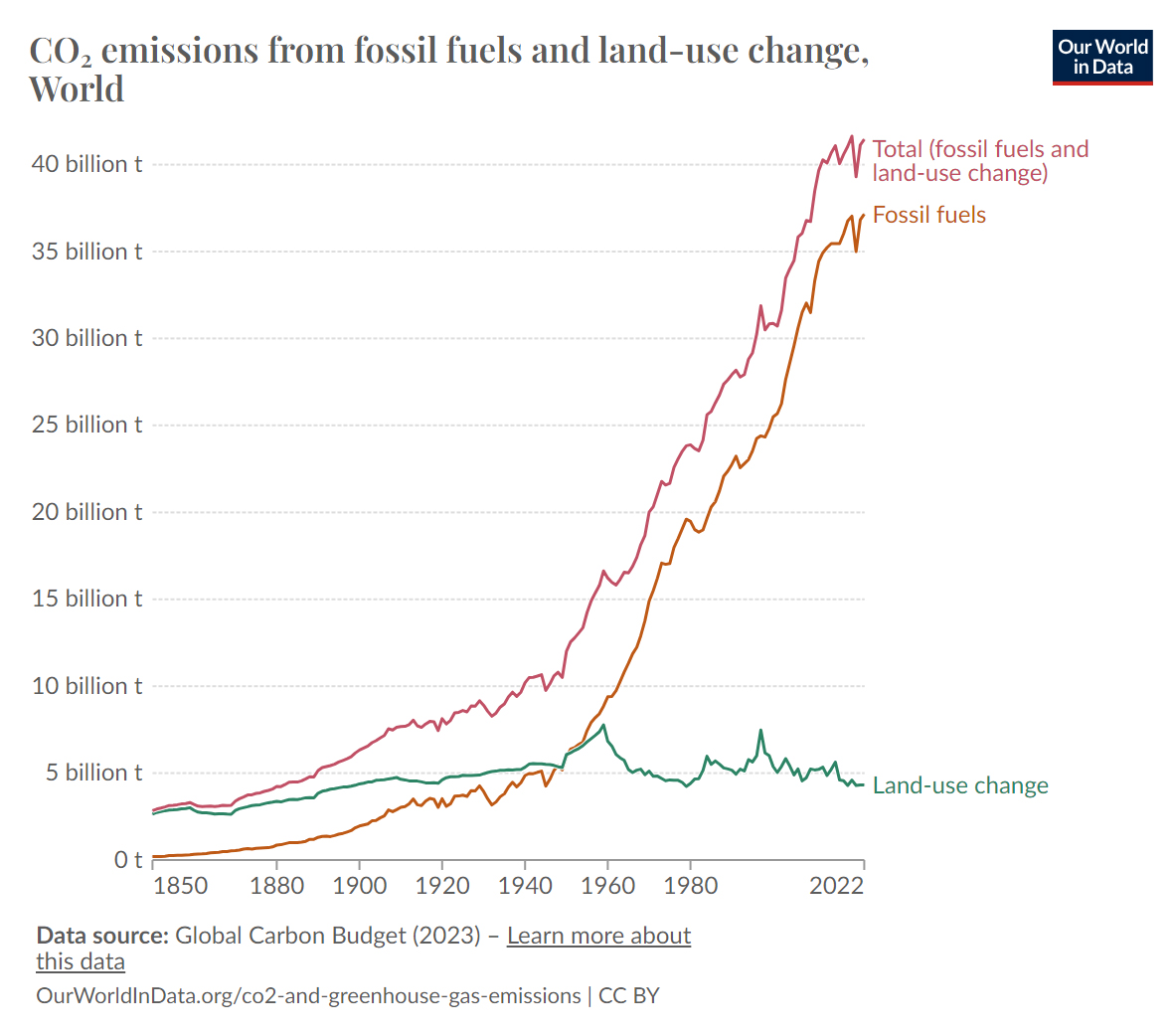Products You May Like
The historic Paris climate agreement started a mantra from developing countries: “1.5 to stay alive.” It refers to the international aim to keep global warming under 1.5 degrees Celsius (2.8 Fahrenheit) compared with preindustrial times. But the world will likely pass that threshold within a decade, and global warming is showing little sign of slowing.
The world is already facing natural disasters of epic proportions as temperatures rise. Heat records are routinely broken. Wildfire seasons are more extreme. Hurricane strength is increasing. Sea level rise is slowly submerging small island nations and coastal areas.
The only known method able to quickly arrest this temperature rise is climate engineering. (It’s sometimes called geoengineering, sunlight reduction methods or solar climate intervention.) This is a set of proposed actions to deliberately alter the climate.
These actions include mimicking the cooling effects of large volcanic eruptions by putting large amounts of reflective particles in the atmosphere, or making low clouds over the ocean brighter. Both strategies would reflect a small amount of sunlight back to space to cool the planet.
There are many unanswered questions, however, about the effects of deliberately altering the climate, and there is no consensus about whether it is even a good idea to find out.

One of the largest concerns for many countries when it comes to climate change is national security. That doesn’t just mean wars. Risks to food, energy and water supplies are national security issues, as is climate-induced migration.
Could climate engineering help reduce the national security risks of climate change, or would it make things worse? Answering that question is not simple, but researchers who study climate change and national security like we do have some idea of the risks ahead.
The massive problem of climate change
To understand what climate engineering might look like in the future, let’s first talk about why a country might want to try it.
Since the industrial revolution, humans have put about 1.74 trillion tons of carbon dioxide into the atmosphere, largely by burning fossil fuels. That carbon dioxide traps heat, warming the planet.
One of the most important things we can do is to stop putting carbon into the atmosphere. But that won’t make the situation better quickly, because carbon stays in the atmosphere for centuries. Reducing emissions will just keep things from getting worse.

Countries could pull carbon dioxide out of the atmosphere and lock it away, a process called carbon dioxide removal. Right now, carbon dioxide removal projects, including growing trees and direct air capture devices, pull about 2 billion tons of carbon dioxide out of the atmosphere per year.
However, humans are currently putting over 37 billion tons of carbon dioxide into the atmosphere annually through fossil fuel use and industry. As long as the amount added is larger than the amount removed, droughts, floods, hurricanes, heat waves and sea level rise, among numerous other consequences of climate change, will keep getting worse.
It may take a long time to get to “net-zero” emissions, the point at which humans aren’t increasing greenhouse gas concentrations in the atmosphere. Climate engineering might help in the interim.
Who might try climate engineering and how?
Various government research arms are already gaming out scenarios, looking at who might decide to carry out climate engineering and how.
Climate engineering is expected to be cheap relative to the cost of ending greenhouse gas emissions. But it would still cost billions of dollars and take years to develop and build a fleet of airplanes to carry megatons of reflective particles into the stratosphere each year. Any billionaire considering such a venture would run out of money quickly, despite what science fiction might suggest.
However, a single country or coalition of countries witnessing the harms of climate change could make a cost and geopolitical calculation and decide to begin climate engineering on its own.
This is the so-called “free driver” problem, meaning that one country of at least medium wealth could unilaterally affect the world’s climate.
For example, countries with increasingly dangerous heat waves may want to cause cooling, or countries that depend on monsoon precipitation may want to restore some dependability that climate change has disrupted. Australia is currently exploring the feasibility of rapidly cooling the Great Barrier Reef to prevent its demise.
Creating risks for neighbors raises conflict alarm
The climate doesn’t respect national borders. So, a climate engineering project in one country is likely to affect temperature and rainfall in neighboring countries. That could be good or bad for crops, water supplies and flood risk. It could also have widespread unintended consequences.
Some studies show that a moderate amount of climate engineering would likely have widespread benefits compared with climate change. But not every country would be affected in the same way.
Once climate engineering is deployed, countries may be more likely to blame climate engineering for extreme events such as hurricanes, floods and droughts, regardless of the evidence.
Climate engineering may spark conflicts among countries, leading to sanctions and demands for compensation. Climate change can leave the poorest regions most vulnerable to harm, and climate engineering should not exacerbate that harm. Some countries would benefit from climate engineering and thus be more resilient to geopolitical strife, and some would be harmed and thus left more vulnerable.
frameborder=”0″ allow=”accelerometer; autoplay; clipboard-write; encrypted-media; gyroscope; picture-in-picture; web-share” referrerpolicy=”strict-origin-when-cross-origin” allowfullscreen>
Nobody has conducted large-scale climate engineering yet, which means that a lot of information about its effects relies on climate models. But while these models are excellent tools for studying the climate system, they’re not good at answering questions about geopolitics and conflict. On top of that, the physical effects of climate engineering depend on who is doing it and what they’re doing.
What’s next?
For now, there are more questions about climate engineering than answers. It’s hard to say whether climate engineering would create more conflict, or if it could defuse international tensions by reducing climate change.
But international decisions on climate engineering are likely coming soon. At the United Nations Environment Assembly in March 2024, African countries called for a moratorium on climate engineering, urging all precaution. Other nations, including the United States, pressed for a formal scientific group to study the risks and benefits before making any decisions.
Climate engineering could be part of an equitable solution to climate change. But it also carries risks. Put simply, climate engineering is a technology that can’t be ignored, but more research is needed so policymakers can make informed decisions.![]()
Ben Kravitz, Assistant Professor of Earth and Atmospheric Sciences, Indiana University and Tyler Felgenhauer, Research Scientist in Civil and Environmental Engineering, Duke University
This article is republished from The Conversation under a Creative Commons license. Read the original article.
